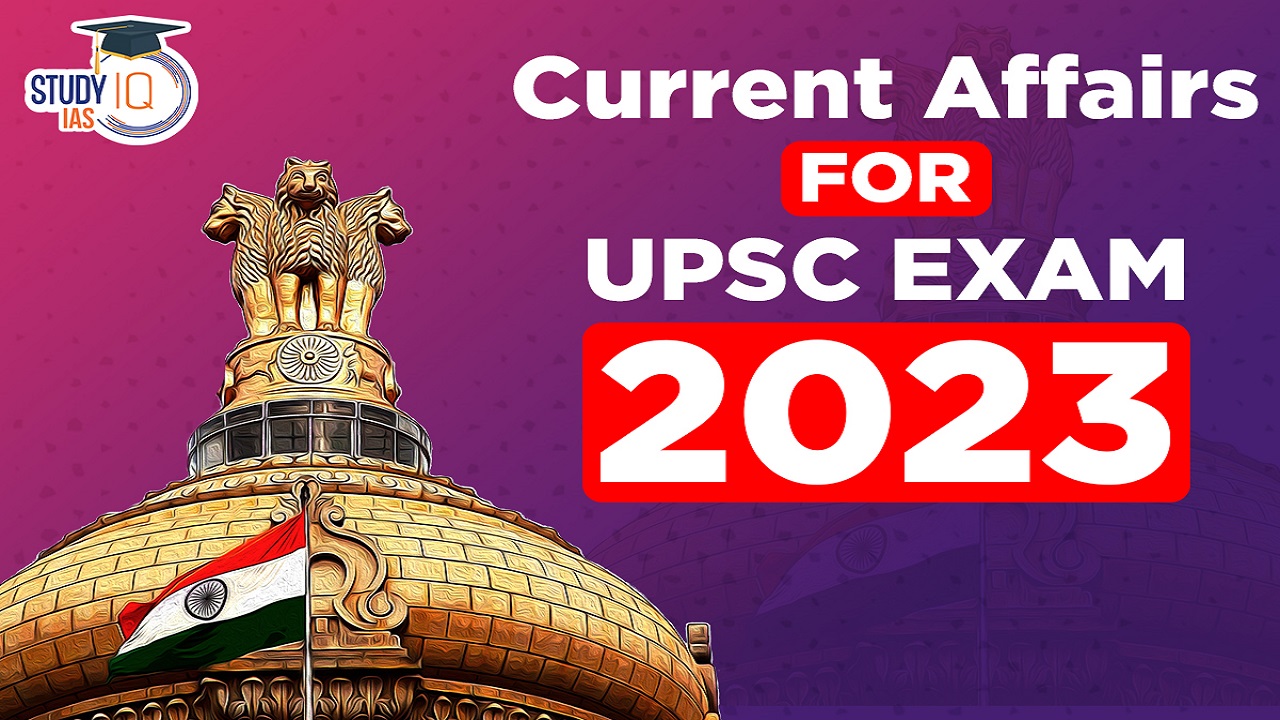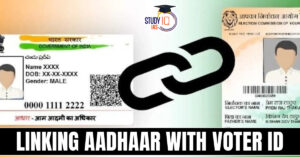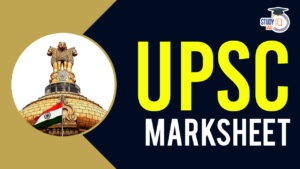Current Affairs 18th September 2023 for UPSC Prelims Exam
Santiniketan in UNESCO World Heritage List
Context: Santiniketan became the 41st UNESCO World Heritage Site in India and the third in West Bengal, after the Sundarbans National Park and the Darjeeling Mountain Railways.
About Santiniketan
- It is a renowned cultural and heritage town located in Birbhum District, West Bengal (Santiniketan literally means “abode of peace” in Bengali).
- Initially, it started as an ashram (hermitage) founded by Rabindra Nath Tagore’s father, Debendranath Tagore, but eventually developed into a centre of art, culture, and learning.
- Santiniketan is famous for Visva-Bharati University, established by Rabindranath Tagore in 1921.
- The university is known for its unique educational philosophy, which emphasizes the integration of nature, creativity, and holistic learning.
- It follows the concept of an open-air classroom where students are encouraged to learn in close connection with nature.
- Until Independence, it was a college, and the institution was given the status of Central University in 1951 through a central Act.
- Its first vice-chancellor was Rathindranath Tagore, the son of Rabindranath Tagore.
- Santiniketan is also adorned with splendid sculptures, frescoes, murals, and paintings created by renowned artists such as Rabindranath Tagore, Nandalal Bose (one of the pioneers of modern Indian art) and Ramkinkar Baij (master sculptor and painter) among others.
Understanding the UNESCO World Heritage Site Status
- UNESCO World Heritage Sites are designated and protected under the “Convention Concerning the Protection of the World Cultural and Natural Heritage,” commonly referred to as the World Heritage Convention.
- This convention was adopted by the UNESCO in 1972.
- The primary purpose of the Convention is to identify and safeguard cultural and natural sites of outstanding universal value for the benefit of present and future generations.

- The list of World Heritage Sites is maintained by the international ‘World Heritage Programme’, administered by the UNESCO World Heritage Committee.
- Nomination Process:
- A country must first identify its significant cultural and natural sites in a document known as the Tentative List.
- Next, it can place sites selected from that list into a Nomination File, which is evaluated by the International Council on Monuments and Sites and the World Conservation Union.
- The two international bodies make recommendations to the World Heritage Committee, which meets once a year to prepare the World Heritage List.
- Selection criteria:
- Until 2004, there were six sets of criteria for cultural heritage and four for natural heritage. In 2005, UNESCO modified these and now has one set of ten criteria (see the image).
- Nominated sites must be of “outstanding universal value” and must meet at least one of the ten criteria.
Current Affairs 16th September 2023 for UPSC Prelims Exam
Moonquakes
Context: A recent study has revealed that the left-over lunar module from the Apollo 17 mission in 1972 induced small, artificial moonquakes on the moon’s surface.
About Moonquakes
- Moonquakes are seismic activities or tremors that occur on the moon’s surface.
- Moonquakes have different causes compared to earthquakes on Earth because they are not primarily driven by the movement of tectonic plates.
Causes of Moonquakes
- Temperature Variation: The moon experiences a wide temperature range, from scorching hot (up to 121 degrees Celsius) to extremely cold (as low as -133 degrees Celsius). This drastic temperature difference leads to the moon’s surface contracting and expanding, causing stress and strain in the moon’s crust, ultimately resulting in seismic activity.
- Meteor Impacts: The moon’s lack of an atmosphere means that even small meteoroids can strike its surface with significant force. These impacts create shockwaves that can deform the lunar ground and trigger seismic events.
- Lander Activities: Recent research has suggested that even human-made activities, such as the landing of lunar modules like the Apollo 17 lander in 1972, can induce moonquakes. In this case, the adjustment of the lander to the moon’s extreme temperature changes was found to produce minor seismic movements.
PM Vishwakarma Yojana
Context: Prime Minister launched the PM Vishwakarma Yojana for traditional artisans and craftsmen.
About the PM Vishwakarma Yojana
- PM Vishwakarma is a new scheme and envisages to provide end-to-end holistic support to the traditional artisans and craftspeople.
- Vishwakarma Scheme was originally announced in the Union Budget 2023.
- Objectives of the scheme:
- To recognize artisans and craftspeople as Vishwakarmas to avail the scheme benefits.
- To provide skill upgradation through training opportunities.
- To provide modern tools to enhance their capability, productivity, and quality of products.
- To offer collateral free credit and reduce the cost of credit by providing interest subvention.
- Digital empowerment of the Vishwakarmas.
- To provide a platform for brand promotion and market linkages.
- Beneficiaries: This scheme aims to benefit individuals skilled in traditional craftsmanship, especially from the Other Backward Classes (OBC) community.
- Skilled artisans like weavers, goldsmiths, blacksmiths, laundry workers, and barbers, among others, will be empowered through this scheme.
- Eligibility Criteria:
- An artisan or craftsperson working with hands and tools and engaged in one of the 18 family-based traditional trades mentioned in the scheme, in unorganized sector on self-employment basis.
- The minimum age of the beneficiary should be 18 years on the date of registration.
- The beneficiary should not have availed loans under similar credit-based schemes of Central Government or State Government, e.g., PMEGP, PM SVANidhi, Mudra, in the past 5 years.
- Benefits of the scheme shall be restricted to one member of the family.
- A person in government service and their family members shall not be eligible under the Scheme.
- Outlay: The scheme has an outlay of Rs 13,000 crore and is fully funded by the Central government.
- Benefits under the scheme:
- Recognition: Recognition as Vishwakarma through Certificate and ID Card
- Skilling:
- Skill Verification followed by 5-7 days (40 hours) Basic Training
- Interested candidates can also enroll for 15 days (120 hours) Advanced Training
- Training Stipend: Rs 500 per day
- Toolkit Incentive: Rs 15,000 grant

- Credit Support:
- Collateral free Enterprise Development Loans: Rs 1 lakh (First Tranche for 18 months repayment) & Rs 2 lakh (Second Tranche for 30 months repayment)
- Concessional Rate of Interest: 5% to be charged from the beneficiary with Interest Subvention cap of 8% to be paid by Ministry of MSME.
- Credit Guarantee fees to be borne by the Government of India.
- Incentive for Digital Transaction: Re 1 per transaction for maximum upto100 transactions (monthly).
- Marketing Support: National Committee for Marketing (NCM) will provide services such as Quality Certification, Branding & Promotion, E-commerce linkage, Trade Fairs advertising, publicity and other marketing activities.
H1B Visa
Context: The US is likely to announce that Indians and other foreign workers on H-1B visas will be able to renew those visas in the US, without having to travel abroad.
About H1B Visa
- Definition: It is an employment-based and non-immigrant visa category for temporary workers.
- The H-1B visa programme permits US companies to temporarily recruit foreign workers in speciality occupations such as mathematics, engineering, technology, and medical sciences.
- Beneficiaries: Indian IT giants like TCS, Infosys and Wipro are among the major beneficiaries of this programme as they rely on it for bringing in tens of thousands of employees with special skills each year.
- Indians are by far the most active users of the US H-1B program and made up 73% of the nearly 442,000 H-1B workers in fiscal year 2022.
- The US government makes 65,000 H-1B visas available to companies seeking skilled foreign workers, along with an additional 20,000 visas for workers with advanced degrees.
- Eligibility:
- A U.S. employer must file an H-1B visa application on behalf of the foreign worker.
- H1B applicants must have at least a bachelor’s degree or equivalent.
- Duration: Typically, the initial duration of an H-1B visa classification is three years, which may be extended for a maximum of six years.
- Once H-1B holders reach that six-year maximum, they must leave the U.S. and remain outside for at least one year before being eligible for a new six years of H1B.
Smallpox Eradication
Context: The World Health Organization is optimistic about the eradication of small pox from the South-east Asian region in a couple of years.
What is Smallpox?
- Definition: Smallpox is an acute contagious disease caused by the variola virus, a member of the orthopoxvirus family.
- It is believed to have existed for at least 3000 years.
- Spread: Smallpox spread through close, face-to-face contact.
- Symptoms: Symptoms of smallpox come in stages and include:
- High fever.
- Severe headache.
- Backache.
- Stomach pain.
- Extreme fatigue and weakness.
- Vomiting.
- Rash that starts in your mouth and spreads to your face, then to the rest of your body.
- Sores, then hard pustules that form from the rash.
- Treatment: The smallpox vaccine, created by Edward Jenner in 1796, was the first successful vaccine to be developed.
Smallpox Eradication Initiatives
WHO:
- The World Health Organization launched an intensified plan to eradicate smallpox in 1967.
- Widespread immunization and surveillance were conducted around the world for several years.
India:
- In the early 1960s, India accounted for nearly 60% of the reported smallpox cases in the world.
- In response to the situation, in 1962 the government of India launched the National Smallpox Eradication Program (NSEP) with a focus on mass vaccination of the population. It poured money into the vaccine manufacturing industry and hired healthcare workers to perform inoculations.
- From 1964 onwards the vaccination strategy was reformulated. The focus was now on Bihar, Uttar Pradesh, Madhya Pradesh and West Bengal where smallpox was most prevalent.
- The introduction of the bifurcated needle technique and the availability of a more potent, heat stable and freeze-dried vaccine in place of the liquid vaccine simplified the process and increased vaccine uptake.
- In September 1970, a Plan of Operation was signed by the Government of India and the World Health Organization (WHO). The key feature of the programme was active surveillance- aggressively seeking out cases rather than waiting for them to be reported.
- The World Health Organization’s International Smallpox Assessment Commission has declared India free from smallpox.


 Daily Quiz 25 April 2025
Daily Quiz 25 April 2025
 Linking Aadhaar with Voter ID Endangers ...
Linking Aadhaar with Voter ID Endangers ...
 UPSC Marks 2025 Out – Download UPSC Ma...
UPSC Marks 2025 Out – Download UPSC Ma...





















